What is Oxygen Cleaning?
Oxygen Cleaning for Quality and Safety
If you’re not familiar with the terminology, it’s not what it sounds like. Oxygen cleaning is a method of cleaning equipment intended for use with either liquid or gaseous oxygen.
Contaminants in an oxygen-rich system pose serious risks. Where used in industrial settings, oxygen cleaning eliminates fire or explosion danger due to flammable contaminants. When being used for medical purposes, oxygen cleaning removes contaminants that can cause direct bodily harm.
Oxygen and Fire
An oxidizer such as oxygen is one of the three things needed for fire. The other two are a fuel (something to burn) and a source of heat or ignition. When an uninhibited chain reaction is added to an environment with a strong oxidizer, the result can be explosive.
Oxygen is used in many industries from chemical processing to pharmaceutical and healthcare. Because of its highly reactive nature, all systems where oxygen is present must be free of any contaminant(s) that could serve as a fuel for combustion.
Many CPV customers including but not limited to pharmaceutical, aerospace, chlorine, and the compressed gas markets, use industrial oxygen or other oxidizers such as chlorine in their operations on a daily basis.
In such an environment, the potential heat source can come from things such as:
- Friction from materials (such as metals) sliding against others
- Electricity in the form of static electricity or electrical arcs from equipment
- Impact or being struck with an object or particle
- Vibration or resonance
- Compression of a liquid, known as Heat of Compression
Autoignition
When a fuel source (which could be a contaminant or the metal itself) in an oxidizing environment spontaneously ignites because of heat produced by sudden compression of a gas or liquid (Heat of Compression), autoignition occurs. If compression such as that created in a valve when it opens and closes generates enough heat…that’s heat in excess of the known autoignition temperature…spontaneous ignition results. In such an oxygen-rich environment, that probably means explosion.
In order to control Heat of Compression and limit temperatures to within the autoignition range in oxygen-rich systems, pressure drops are limited.
Contaminants come into play because they can have even lower autoignition temperatures than the valve components, which means that explosion could occur at lower temperatures…temperatures less than the autoignition temperature of the valve components.
That’s why it’s so crucial that any and all potential sources of fuel be removed from an oxidizer-rich system or environment.
Types of Contaminants
What exactly needs to be removed during cleaning? A contaminant is essentially anything that would cause combustion or autoignition or affect the purity of the product. According to ASTM G93, there are three types of contaminants:
- Organics
- VOC compounds
- Hydrocarbon-based greases and oils
- Inorganics
- Nitrates
- Phosphates
- Water-based detergents & cutting oils
- Acids/solvents
- Particulate
- Particles, lint, and fibers
- Dust
- Welding slag
Cleaning Mechanisms
The cleaning can be carried out in a number of ways. The method depends primarily on the nature of the contaminant and the requirements set forth by standards or any additional customer specifications. The following is a partial list of cleaning methods:
Mechanical cleaning
- Includes sandblasting, grinding, and wire brushing
- Removes scale, paint or coatings, and welding slag
Aqueous cleaning
- Hot water and steam – with or without detergent
- Removes water-soluble contaminants
- Spray or agitation
- Detergent must be rinsed off before drying
- Alkaline or caustic cleaning
- Caustic salt is dissolved in water creating a solution with high alkalinity
- Removes hydrocarbon oils, grease, and wax
- Can be sprayed, immersed, hand swabbed, or enhanced by agitation or ultrasonic agitation
- Solvent residue must be removed before drying
Semi-aqueous cleaning
- Hydrocarbon solvent and water emulsion
- Removes heavy grease wax and hard-to-remove soils
- Agitation needed to mix and maintain the mixture
- Emulsion must be rinsed off
Acid cleaning
- Hydrochloric acid
- Removes scale, rust, and oxides
- Will strip chrome, zinc, cadmium and other platings or coatings
- Recommended only for carbon and low alloy steels
- Must be removed/rinsed
- May require neutralization
- Chromic acid or nitric acid
- Used for deoxidizing, brightening, and removing alkaline residues (black smut)
- Removes/cuts oils
- Recommended for aluminum, copper, and their alloys
- Must be removed/rinsed
- May require neutralization
- Phosphoric acid
- Removes oxides, light rust, and fluxes
- Must be removed/rinsed
- May require neutralization
Solvent washing
- Alcohol or other solvents
- Used to re-clean areas as warranted by inspection
- With or without water dilution or emulsion
- No residue/does not need to be rinsed
Vapor degreasing
- Effective on inaccessible areas
- Uses a vaporized solvent while the part to be cleaned is kept at a lower temperature
Inspection Techniques
After cleaning and before being assembled and packaged, valve components go through an inspection to ensure they meet minimum cleanliness requirements. Inspection can be done in any of the following ways:
Visual inspection
White light is used to detect contamination by visible particles, while ultraviolet light (black light) is used to detect particles that fluoresce.
Wipe test inspection
A wipe test is where a clean white paper or lint-free cloth is used to lightly rub the surface of areas that cannot be seen. The cloth is then inspected with both white and UV light.
Water break test inspection
The surface is sprayed with clean water. If the surface is free of oily residue, it will form a thin layer that remains unbroken for at least five seconds. The water will bead up into droplets if there is any oil remaining on the surface.
Solvent filter inspection
For solvent filtering, the inaccessible area is rinsed with a solvent which is then filtered to capture any remaining contaminants. The filter is inspected with white and UV light.
Quantitative inspection
Quantitative inspection involves evaporation of the cleaning solvent to determine the weight of the remaining particles, which will be the contaminants.
It’s up to the user or customer to determine what level of residue is acceptable.
Cleanroom
At CPV Manufacturing, our quality control standards are high. That’s why we have our own oxygen cleanroom.
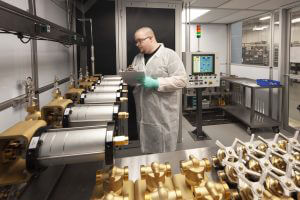 Employees are specially trained to operate the cleaning and inspection equipment in the cleanroom. Our cleanroom is Class 10,000, meaning the particulates must be less than 110,000-micrometer particles per cubic foot.
Employees are specially trained to operate the cleaning and inspection equipment in the cleanroom. Our cleanroom is Class 10,000, meaning the particulates must be less than 110,000-micrometer particles per cubic foot.
Having our own in-house cleanroom facility allows us to ensure that industry standards, as well as our quality standards, are met or exceeded.
Packaging
Once the parts have been cleaned, and it’s been verified that all contaminants have been removed, they can be assembled. The finished valves are then packaged in a way to keep them clean until they’re ready to be put into use.
In the end, it doesn’t matter how it’s done, as long as the required level of cleanliness is achieved and our customers are satisfied.
Oxygen cleaning is just one more way we ensure that our high-quality products meet or exceed all relevant standards. Contact CPV Manufacturing for more information about what we can do for you.
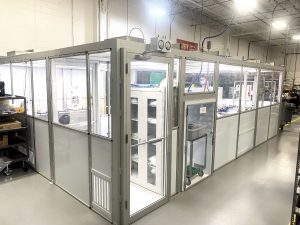
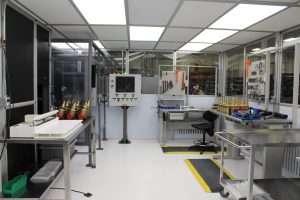
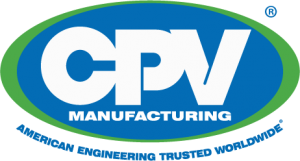 CPV Manufacturing was founded in 1915 as a one-man business, manufacturing replacement valves for steam-driven reciprocating pumps. Today, CPV is recognized worldwide for its high-quality valves and fittings and dedication to state-of-the-art design, equipment, safety, and reliability. CPV Manufacturing’s valves withstand the high tolerances required by the maritime, industrial gas, and petrochemical industries. Based out of Kennett Square, PA, USA, CPV has a complete facility for developing, manufacturing, and testing its products. Dedicated workers and global partnerships allow CPV to be a market leader.
CPV Manufacturing was founded in 1915 as a one-man business, manufacturing replacement valves for steam-driven reciprocating pumps. Today, CPV is recognized worldwide for its high-quality valves and fittings and dedication to state-of-the-art design, equipment, safety, and reliability. CPV Manufacturing’s valves withstand the high tolerances required by the maritime, industrial gas, and petrochemical industries. Based out of Kennett Square, PA, USA, CPV has a complete facility for developing, manufacturing, and testing its products. Dedicated workers and global partnerships allow CPV to be a market leader. 
 Oxygen Valves
Oxygen Valves Employees are specially trained to operate the cleaning and inspection equipment in the cleanroom. Our cleanroom is Class 10,000, meaning the particulates must be less than 110,000-micrometer particles per cubic foot.
Employees are specially trained to operate the cleaning and inspection equipment in the cleanroom. Our cleanroom is Class 10,000, meaning the particulates must be less than 110,000-micrometer particles per cubic foot.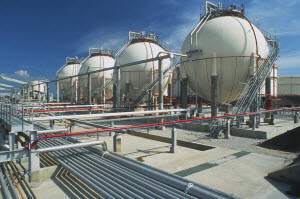
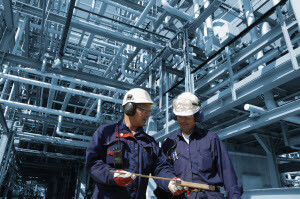
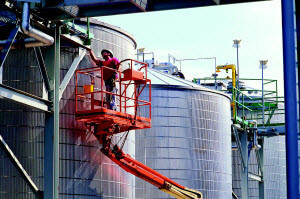
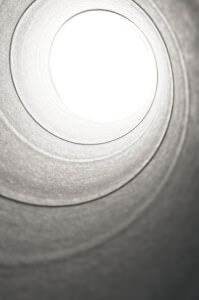 Manufacturing cleanroom services and precision cleaning of valves and fittings is crucial for meeting industry standards. While oxygen itself isn’t flammable, it assists in combustion and can react with most materials. Materials must be oxygen compatible and free of contaminants such as hydrocarbon oils and greases. These contaminants can easily ignite or cause ignitions.
Manufacturing cleanroom services and precision cleaning of valves and fittings is crucial for meeting industry standards. While oxygen itself isn’t flammable, it assists in combustion and can react with most materials. Materials must be oxygen compatible and free of contaminants such as hydrocarbon oils and greases. These contaminants can easily ignite or cause ignitions.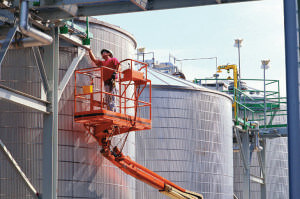 CPV Manufacturing is recognized as the leader and innovator globally in the industrial gas industry for more than a century. The high-quality
CPV Manufacturing is recognized as the leader and innovator globally in the industrial gas industry for more than a century. The high-quality